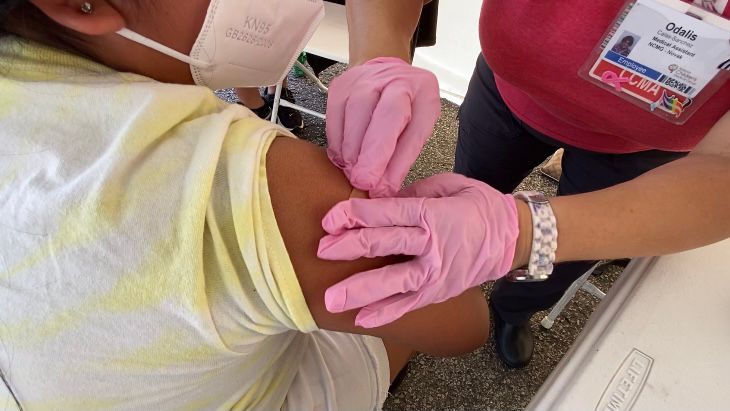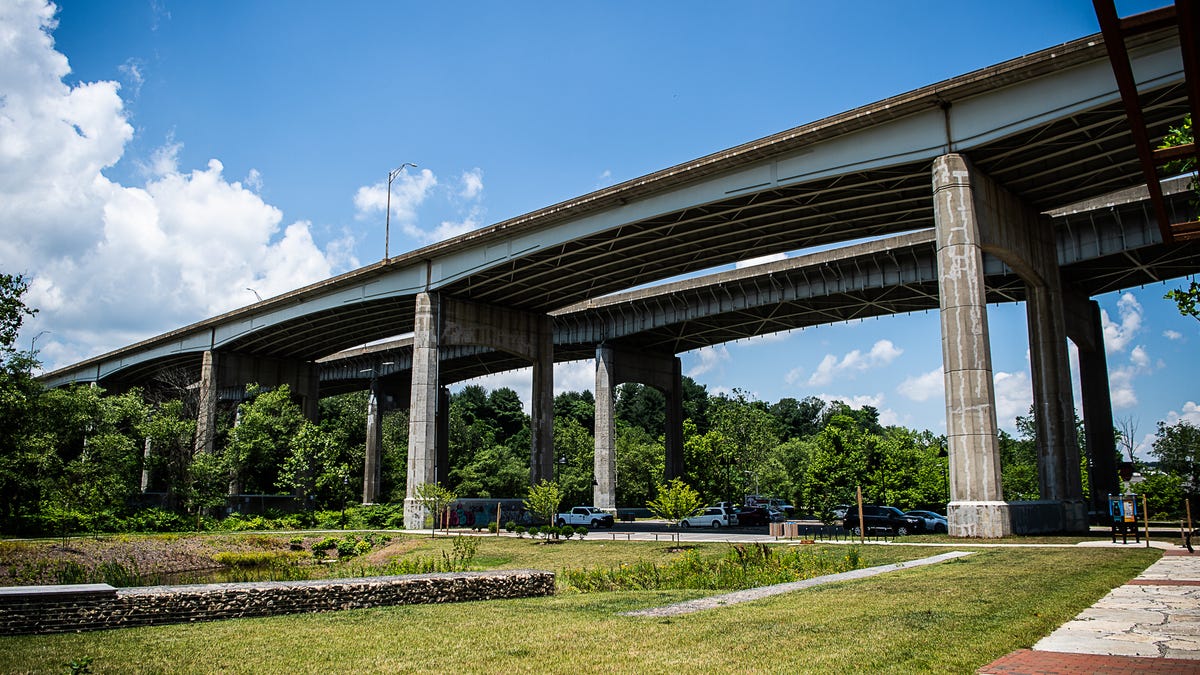North Carolina
Flu-related deaths are reported in North Carolina

The first flu-related deaths of the 2023-24 season have been reported. The N.C. Department of Health and Human Services announced Wednesday two people from the western part of the state have died from complications of the flu and COVID-19.
Positive cases of the flu, COVID-19 and respiratory syncytial virus (RSV) are already circulating, with numbers expected to rise in the coming months. State officials are urging people to stay up to date on their vaccinations to prevent serious complications or death.
“As flu season ramps up and COVID-19 is still circulating, it is very important for people to get their annual vaccines, practice good hand hygiene and stay home when sick,” said State Epidemiologist Zack Moore.
The Centers for Disease Control and Prevention recommends all people 6 months and older get a fall vaccine against COVID-19 and a seasonal flu vaccine to best protect themselves against the viruses, especially those falling into high risk categories such as people 65 and older, children younger than 5, pregnant women, people with weakened immune systems, and those with medical conditions such as asthma, diabetes, heart disease and obesity.
In a post on X, formerly known as Twitter, the CDC said approximately 137 million doses of the flu vaccine have been distributed in the U.S.
According to the CDC, an estimated 5,000 people died from the flu in the U.S. during the 2021-22 season. Since the rise of the COVID-19 pandemic, the start of flu season has been less predictable.
Flu season typically varies, but tends to increase in October and usually peaks between December and February.
Vaccines for the flu and COVID-19 are available at pharmacies, private medical offices, some federally qualified health care centers and local health departments. Go online to find a location near you.
It is also recommended that older adults and pregnant women receive the RSV vaccine. Parents of infants can reach out to their health care provider to protect their children from severe RSV.
Other precautions against respiratory viruses you can take are avoiding touching your eyes, mouth and nose, disinfecting objects and surfaces often, covering your mouth when you cough and sneeze, and staying home when you are sick.
It is best to test early when not feeling well. Early testing and treatment can keep infections from becoming more serious. The N.C. DHHS website has detailed information about COVID-19 testing and treatment.

North Carolina
Invasive pest impacting Eastern North Carolina trees

GREENVILLE, N.C. (WITN) – A highly invasive beetle, not new to North Carolina, has now made its way into the East.
According to the North Carolina Forest Service, the Emerald Ash Borer has now impacted five new counties in ENC, infecting and killing ash trees.
The metallic green beetle bores into trees and feeds on tissues beneath the bark. Typically, by the time you see any symptoms, the tree is too far gone.
According to Pitt County Extension Director, Matt Stevens, the beetle was first found in the state in June of 2013. The invasive species is now impacting counties such as Bertie, Duplin, Anson, Sampson, and Martin. The total number of affected counties in the state is 76.
“They are winged insects so they do fly and migrate sort of that way but they are also transported by plant material and firewood especially. Sometimes you go camping and they have warnings about not bringing in firewood or taking firewood from the location and it’s because of the emerald ash borer that they don’t want to spread,” Stevens said.
According to the N-C Forest Service, the entire state is under quarantine for the beetle. That prohibits the movement of ash plant parts, the insect itself, ash nursery stock, and all hardwood firewood into non-quarantined areas, including some neighboring states.
The state forest service recommends people burn local or treated firewood to reduce the spread of invasive pests.
People who suspect an infested tree in an area should contact their county ranger.
Copyright 2024 WITN. All rights reserved.
North Carolina
Organizations work to clean up abandoned vessels from coastal North Carolina waterways

NEW HANOVER COUNTY, N.C. (WITN) – Along the North Carolina coast, you can find hundreds of boats that are storm-ravaged or left behind. But thanks to the efforts of several organizations from across the state, that number will soon grow smaller.
“It’s a hazard and they’ve been here for a good while so a lot of property owners will be glad to get them out,” says Larry Denning, Carolina Beach harbor master.
The North Carolina Coastal Federation, NC Wildlife Resources Commission, NC Division of Coastal Management and local governments are working with marine contractors to remove 12 abandoned vessels from the New Hanover County area.
“It’s really exciting and gives us a chance to have a really direct and meaningful impact on our coastal waters and habitats,” says Ted Wilgis, the Coastal Federation’s marine debris program manager.
The Coastal Federation says it’s leading the effort after receiving state funding and money from the National Oceanic and Atmospheric Administration’s marine debris program.
“It’s a lot of money that doesn’t have to come out of local governments budgets it’s fairly expensive to remove these vessels,” Wilgis says. “Anywhere from about $450 per linear foot so an average sailboat can cost anywhere from $5,000- $15,000 depending on how hard they are to remove.”
Once these 12 boats are removed, the Coastal Federation says it hopes to remove another 40 by the end of 2024. Since 2021, the organization’s removed 110 boats and NCWRC has removed more than 200 vessels.
Copyright 2024 WITN. All rights reserved.
North Carolina
Asheville I-26 Connector contract the ‘largest’ in NC history; What about local companies?

ASHEVILLE – The $1.15 billion final contract for the I-26 Connector project is the largest contract awarded in the state’s history, according to a North Carolina Department of Transportation engineer presentation on the project May 17.
NCDOT Engineer Nathan Moneyham spoke about the scale of the project and contract during the May 17 French Broad River Metropolitan Planning Organization meeting, stating it was the largest awarded in the states history.
Of the three proposed designs for I-26’s Section B, which runs from Haywood Road in West Asheville and crosses the French Broad to connect to U.S. 19/23/70 and U.S. 240, contractor Archer-Wright Joint Venture’s $1.15 billion design was selected May 15 for the project. The section also includes improvements to Riverside Drive.
The FBRMPO is a partnership between local and state government that makes transportation planning decisions and meets planning requirements established by federal legislation for transportation funding, according to the FBRMPO website. The federally-mandated organization was created in 1962.
The NCDOT Design-Build process happens in two stages, according to the NCDOT website. First, NCDOT creates a shortlist of contractors based on contract applications. After that, NCDOT engineers determine the “best value” proposal by evaluating designs.
Other recent design-build contracts include a $242 million contract for a US-70 expansion in Craven County, a $287 million contract for a new freeway in Wake County and a $53 million upgrade to U.S. 70 in Cleveland County, according to the NCDOT website.
During the meeting, city councilmember Kim Roney asked how different neighborhoods, like the Burton Street neighborhood — a historically Black West Asheville neighborhood, which can expect major changes from the I-26 Connector project — might see long-term positive impacts from hiring local minority and women-owned contracting companies in the record setting project.
NCDOT engineers have separated some elements of the I-26 project out of the larger contract, which might be done by smaller local contractors, Moneyham said.
“If you’ve got a local contractor who’s small, just getting started — working with a company like [Archer Western] is intimidating,” Moneyham said. “So, we’ve tried to pull out smaller pieces of work, especially in the areas adjacent to those neighborhoods, where we can let smaller contracts.”
‘Optimization and refinement’
The I-26 Connector project has been in the pipeline for over 30 years, with local businesses, neighborhoods and the city of Asheville anticipating NCDOT to make way for the expansive project despite it facing multiple, long-term funding setbacks.
Funding setbacks could still be a problem for the project.
Because all bids came in above estimated cost of the project, NCDOT developed a new “Optimization and Refinement” process to ensure the project moves forward after the high bids indicated “it was in significant danger of, again, taking another round of significant delays,” Moneyham said during the meeting.
The additional I-26 Connector Design-Build process also came with technical modifications and a proposed, secondary “adjusted bid” price of $846 million, which was significantly lower than Archer-Wright’s $1.15 billion actual bid.
The over $300 million difference between the adjusted price and actual bid was the result of the new optimization process. The process will continue over the next six-months, as NCDOT works directly with Archer-Wright Joint Venture to reduce cost “to get it down to the point we can fully fund and begin construction,” Moneyham said.
“We’re not looking to undo anything,” Moneyham said regarding I-26 Connector commitments. “But our main focus is to reduce the cost by looking for construction inefficiencies we can correct.”
More: Asheville hospitality workers face low wages, no paid sick leave, highest rent in NC
More: Woodfin’s Whitewater Wave likely to be completed in 2024 as only wave in WNC
Will Hofmann is the Growth and Development Reporter for the Asheville Citizen Times, part of the USA Today Network. Got a tip? Email him at WHofmann@citizentimes.com. Please help support this type of journalism with a subscription to the Citizen Times.
-

 News1 week ago
News1 week agoNevada Cross-Tabs: May 2024 Times/Siena Poll
-

 World1 week ago
World1 week agoPro-Palestinian university students in the Netherlands uphold protest
-

 Politics1 week ago
Politics1 week agoWhite House walks diplomatic tightrope on Israel amid contradictory messaging: 'You can't have it both ways'
-

 Politics1 week ago
Politics1 week agoDem newcomer aims for history with primary win over wealthy controversial congressman
-

 Politics7 days ago
Politics7 days agoSouthern border migrant encounters decrease slightly but gotaways still surge under Biden
-

 World7 days ago
World7 days agoSlovakia PM Robert Fico in ‘very serious’ condition after being shot
-

 Politics1 week ago
Politics1 week agoNY v. Trump trial resumes with 'star witness' Michael Cohen expected to take the stand
-

 Politics1 week ago
Politics1 week agoReports of Biden White House keeping 'sensitive' Hamas intel from Israel draws outrage



















